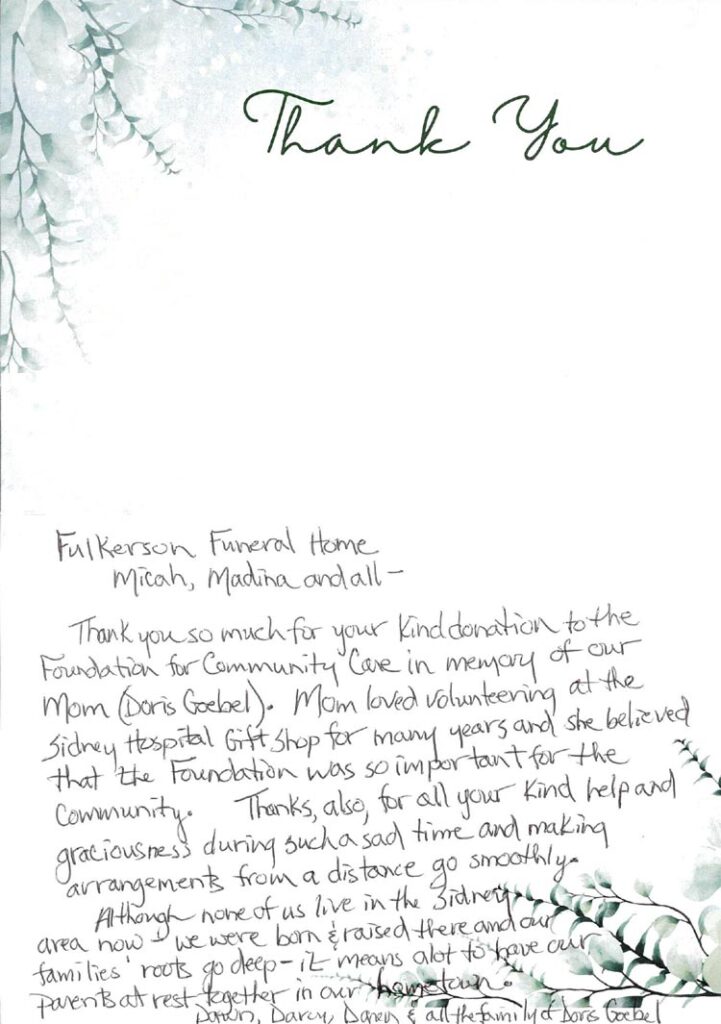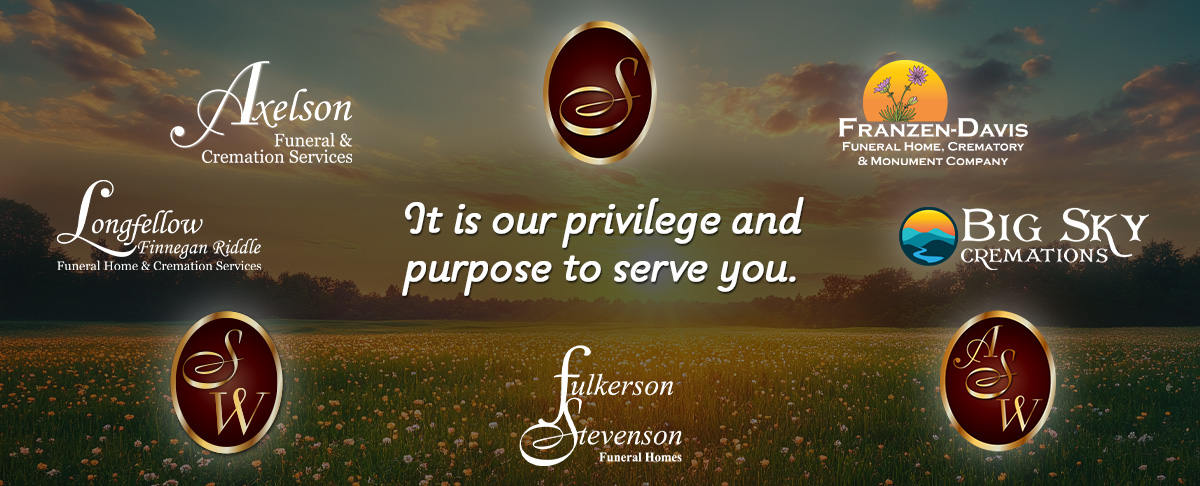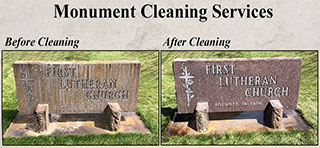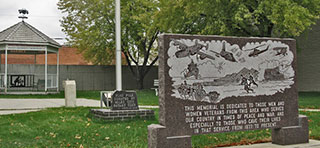
Henceforth I call you not servants; for the servant knoweth not what his lord doeth: but I have called you friends; for all things that I have heard of my Father I have made known unto you. John 15:15
Remembering Can Be So Very Important
It’s been a while since this Celebration of Life was conducted for Bill Harding by Stevenson & Sons Funeral Home in Miles City. It was such an amazing service and event, attended by hundreds. The days of planning, making arrangements, acquiring the venues, facilitating travel and transportation – and more – demonstrate both an unmatched dedication of the Stevenson & Sons Funeral Home and the deepest love and regard for a loved one and their final wishes. Please take a few moments to join many in remembering Bill and the great lengths taken to make his final celebration a truly memorable one.
From Families we served…
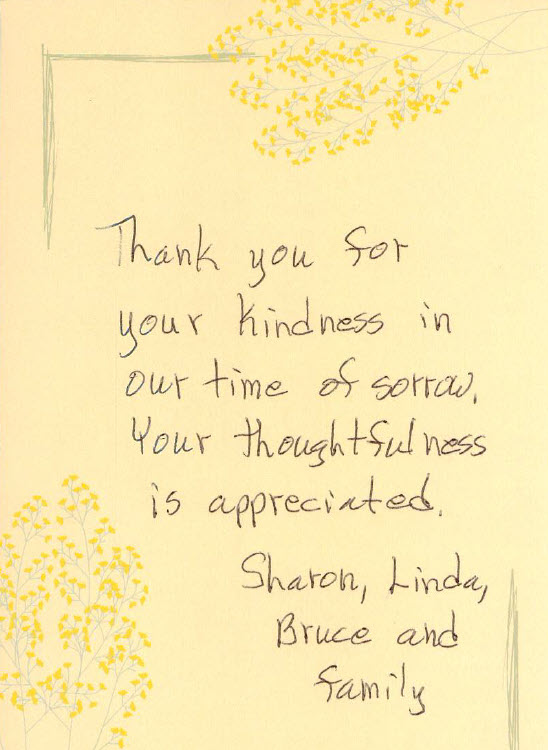
Introducing Kurt Baade
 Kurt was born in Livonia, MI and grew up in Martinsville, IN. He attended Martinsville High School where he went to state in gymnastics, played volleyball, and set a record in the long jump. He attended Vincennes University studying culinary arts before deciding to change gears and attend mortuary school. He graduated from Mid-America College of Funeral Service in Jeffersonville, IN in 1989. Upon graduation, he spent 25 years serving families in Palm Beach County Florida. After a vacation to Alaska in 2010, he realized that the beckoning mountains of the Alaska Range were calling him. He accepted a position with a firm in Anchorage, AK and worked for the “Mushing Mortician” for five years. He now calls Williston home.
Kurt was born in Livonia, MI and grew up in Martinsville, IN. He attended Martinsville High School where he went to state in gymnastics, played volleyball, and set a record in the long jump. He attended Vincennes University studying culinary arts before deciding to change gears and attend mortuary school. He graduated from Mid-America College of Funeral Service in Jeffersonville, IN in 1989. Upon graduation, he spent 25 years serving families in Palm Beach County Florida. After a vacation to Alaska in 2010, he realized that the beckoning mountains of the Alaska Range were calling him. He accepted a position with a firm in Anchorage, AK and worked for the “Mushing Mortician” for five years. He now calls Williston home.
Most is his time off is spent taking care of his “Pack.” He came to Williston with his 3 Alaskan Sled-dogs: Maya, Abby, Frayja. Since then, Kurt added to his pack with Oakley, an adopted German Shepard puppy, Frayja had a litter of 5 pups of which he still has Blue, Charlie and Echo. Unfortunately, he lost Maya in 2024 & Abby this past February…due to their age.
Kurt enjoys spending time with his dogs. He has become quite good at woodworking. He has crafted numerous items at several of the Stevenson & Sons funeral homes. He has made his own kitchen table, his bed, urns for Maya and his Rottweiler Dozer. He has also crafted some urns for families. But he mostly enjoys making barn replicas for friends and co-workers based on their own barns.
Below is a slider that has a few of Kurt’s memorable moments and friends. Enjoy!
Planning Ahead
More and more people are realizing the many advantages of prearranging their funerals. The process is simple, and the benefits to the loved ones who are left to handle the arrangements are very well recognized and appreciated. To accommodate the growing need for professional pre-planning support, we provide highly trained and experienced Pre-Need Counselors at Stevenson & Sons:
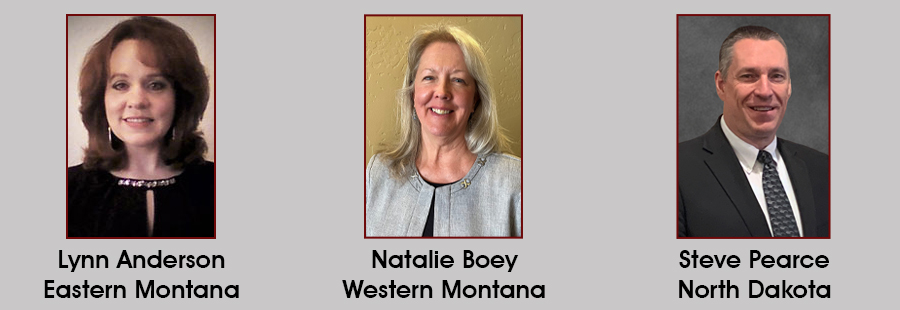
Lynn Anderson in Miles City, Montana • 406-232-4457
Natalie Boey in Helena, Montana • 406-442-8520
Steve Pearce in Williston, North Dakota • 701-572-6329
Some of the benefits of prearranging are:
 Pre-planning allows you to express your own wishes • It means that your loved ones will not have to make a number of important decisions during a time of mourning • Your funeral plan is transferable, in case you move away • It relieves your family of the financial burden • It allows your loved ones to spend their time comforting each other during a time of grief, instead of concerning themselves with the specifics of the arrangements • When pre-planning, there are both guaranteed and non-guaranteed plans available to choose from • It allows you the opportunity to discuss your final arrangements with family members to ensure clarity, and to ensure that those responsible are comfortable with all of your decisions.
Pre-planning allows you to express your own wishes • It means that your loved ones will not have to make a number of important decisions during a time of mourning • Your funeral plan is transferable, in case you move away • It relieves your family of the financial burden • It allows your loved ones to spend their time comforting each other during a time of grief, instead of concerning themselves with the specifics of the arrangements • When pre-planning, there are both guaranteed and non-guaranteed plans available to choose from • It allows you the opportunity to discuss your final arrangements with family members to ensure clarity, and to ensure that those responsible are comfortable with all of your decisions.
If you’d like to know more, we recommend visiting: https://www.whypreplan.org/
Funeral Planning Aid
We frequently receive questions regarding what the person responsible for making funeral arrangements should expect. Since we’ve received so many requests for this information, we are placing a link which allows our newsletter subscribers to download a complete copy of our Funeral Planning Aid. The informative article is presented as a PDF – simply click the PDF Button below to access it. That way, if you wish, you may keep it on your computer for future reference or sharing with others. If after you read the article, you have any questions, please contact one of our pre-planning professionals: Lynn Anderson in Miles City, Montana at 406-232-4457 • Steve Pearce Williston, North Dakota at 701-572-6329 • Natalie Boey in Helena, Montana at 406-442-8520. To download the Funeral Planning aid PDF CLICK HERE.
Who’s eligible for Military Funeral Honors?
- Military members on active duty or in the Selected Reserve.
- Former military members who served on active duty and departed under conditions other than dishonorable.
- Former military members who completed at least one term of enlistment or period of initial obligated service in the Selected Reserve and departed under conditions other than dishonorable.
- Former military members discharged from the Selected Reserve due to a disability incurred or aggravated in the line of duty.
How to establish veteran eligibility
Submit the DD Form 214. The DD Form 214 may be obtained by filing a completed Standard Form 180 with: National Personnel Records Center(NPRC) • 9700 Page Blvd. • St. Louis, MO 63132. The Standard Form 180 may be obtained from: http://www.archives.gov/research/order/standard-form-180.pdf
Headstones for Veterans
For complete information and ordering, please visit: Legislative Changes Concerning Eligibility for Headstones, Markers and Medallions – National Cemetery Administration (va.gov)
Supporting Others
If you know someone who would benefit from the uplifting messages and support information we provide in these monthly newsletters, they can sign up to receive their own copy here. It’s a great way to lend your support to a friend or a family member.
Financial Assistance
If you lost a loved one due to Covid-19, you may qualify for financial assistance for your family’s funeral expenses. Click here to find out more information. Recently posted on the FEMA Covid-19 Funeral Assistance page: The COVID-19 incident period ended on May 11, 2023. FEMA will continue to provide funeral assistance until Sept. 30, 2025, to those who have lost loved ones due to this pandemic.
GriefSteps® — A Year of Grief Support
Sign up for one year of weekly grief messages designed to provide strength and comfort during this challenging time. Sign up here.
